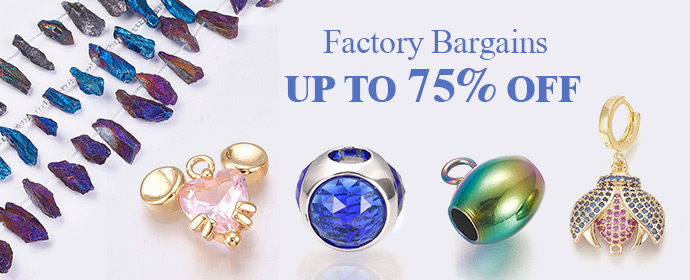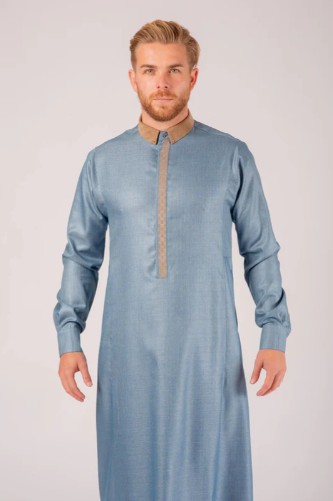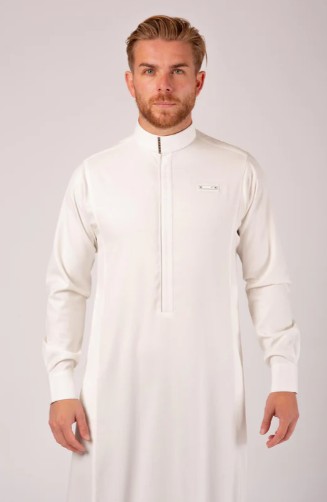Moving clothing called jubbahs constitutes not just clothes; it is organic and demonstrates one’s cultural background, uniqueness, and timeless aesthetic. Jubbahs represent the Islamic traditional values for men, the same as the abayas, and the hijab is the symbol of conventional dignity for Muslim women. Jubbahs have changed throughout the years across several locations, revealing distinct designs with tones and representing the wealth and cultures that define their homeland. The fascinating history of jubbahs is delved into within the present work, which spotlights standard designs and the ease of online acquiring, including the meaning of picking an appropriate jubbah according to your unique tastes.
The Beauty of Native Jubbahs: a Review on Different Designs
Photo credit AL AQSA
Jubbahs don’t look alike; they vary tremendously because of the nation they begin from. Amazing Melody of Colours and Details in Maghribi Jubbahs: Those jubbahs, native to the region known as the Barbary location, have become famous due to their intricate patterns and colourful hues.
Maghribi Emerald Jubbahs: These jubbahs, ideal for celebrations and frequently embroidered with beautiful needlework, symbolise affluence. In several civilisations, green signifies development, strength, and happiness.
Maghribi Black Jubbahs: Suitable for religious gatherings and formal events, black Maghribi jubbahs represent a sophisticated emblem. Black constitutes a traditional tone that communicates dignity or command.
Maghribi Taupe Jubbahs: Presenting a fragile, exquisite investigation, taupe Maghribi jubbah is highly customisable and can be used in any way for various circumstances. As an all-purpose shade, beige beautifully combines different colour schemes and patterns.
Maghribi Navy Jubba: Recognised for its capacity to marry elegance and practicality, the azure Maghribi is seamlessly an appealing choice for both occasions of distinction and everyday use.
Omani Jubba: A Showcase of Perfection and Elegance Omani jubbahs have become renowned due to their exquisite artistry and plain developments, which provide them with an underlying beauty.
Omani Taupe Jubbahs: This jubbah prioritises quality over jewellery and exhibits a bright yet elegant appearance. The style of the cut and texture is highlighted. Black Omani jubbahs are another enduring standard, often worn at religious ceremonies and refined on both sides simultaneously.
Clear White Jubbahs from the Sultanate of Oman
Photo credit AL AQSA
White Omani jubbahs are frequently seen throughout religious ceremonies and special occasions. They indicate innocence and emotional determination. White is an oriental shade that signifies intellectual information, calmness, and simplicity.
Emirati Jubbahs: The Blend of Traditions and Contemporary Life: Emirati jubbahs generate an individual and fashionable image by masterfully merging modern and traditional sections.
Emirati Navy Jubbahs: With their sophisticated design, these jubbahs bring an up-to-date take on ancestral attire. This ensemble maintains historical customs while adopting present fashion developments.
Obtaining a suitable jubbah has become more manageable in the digital media age. You may explore the broad spectrum of clothing types, shades, and sizes accessible through digital Islamic stores at the convenience of your dwelling. You can find jubbahs that suit your tastes and preferences at merchants such as al aqsa.co.uk.
Local Islamic Shops Offer Many Benefits
The convenience of ordering online is great, but a trip to your local Islamic store offers more personalised service. Its features let customers look at the fabrics, try many different appearances, and receive customised advice from employees with years of experience. Forming an affinity towards a nearby shopping centre promotes a sense of togetherness customised.
Choosing the Ideal Jubbah: Pleasure and Aesthetic Elements
Picking a good jubbah involves considering an assortment of elements:
Fabric: Employ light textiles, such as cotton and linen, for warmer climates and stronger fabrics, like woollen, during lower temperatures.
Fitting: Ensuring a jubbah fits properly and allows for easy movements.
Design: Choose an appearance that complements your personality or the function for which you will be sporting it.
Shade: Examine the symbolic meaning of colours; pick a hue that speaks to you.
Jubbahs: Changeability in Every Context
Jubbahs can be used for daily use, formal events, religious ceremonies, and casual social gatherings. Their versatility makes them an excellent match for any garment.
The Relevance of Jubbahs in Heritage
In many Muslim communities above their physical worth, jubbahs have great social importance. These stand for custom, humility, and respect of one’s forefathers. Jubbahs are often donned for petitions, holidays of faith, and other significant events, underscoring their importance as social black ink.
Keeping Treatment of A Jubbah: Protecting Its Beauty and Reliability
Giving your jubbah enough care will help preserve its lifetime and workmanship. Different washing instructions will apply to the decorative accents and weave of the cloth. Usually, delicate jubbas should be cleaned by hand or with towels. More sturdy materials could allow washing and drying. Always refer to the clothing instruction booklet for pricey jubbas that need particular care.
Conclusion
Thanks to their long tradition, numerous types, and continuing significance in society, Jubbahs are treasured fashion accessories worldwide. You’re sure to find a suitable jubbah to represent their distinctive preferences, no matter whether you like the contemporary styles of Emirati jubbahs, the restrained elegance of Omani jubbahs, or the stunning, bright colours of Maghribi jubbahs.
Obtaining the perfect jubbah has grown simpler than ever because of the ease offered by Islamic Internet stores and the highly personalised attention of neighbourhood Islamic shops, such as hijabs and abayas for women. Jubbahs constitute more than mere clothes; these serve as a legacy, a cultural representation, and a testimony to a vitality of tradition that persists. These are expected to be worn for many generations to come. They represent the spirit of enduring preservation and function as a link connecting the historical past and the current.
Recommend0 recommendationsPublished in Uncategorized






